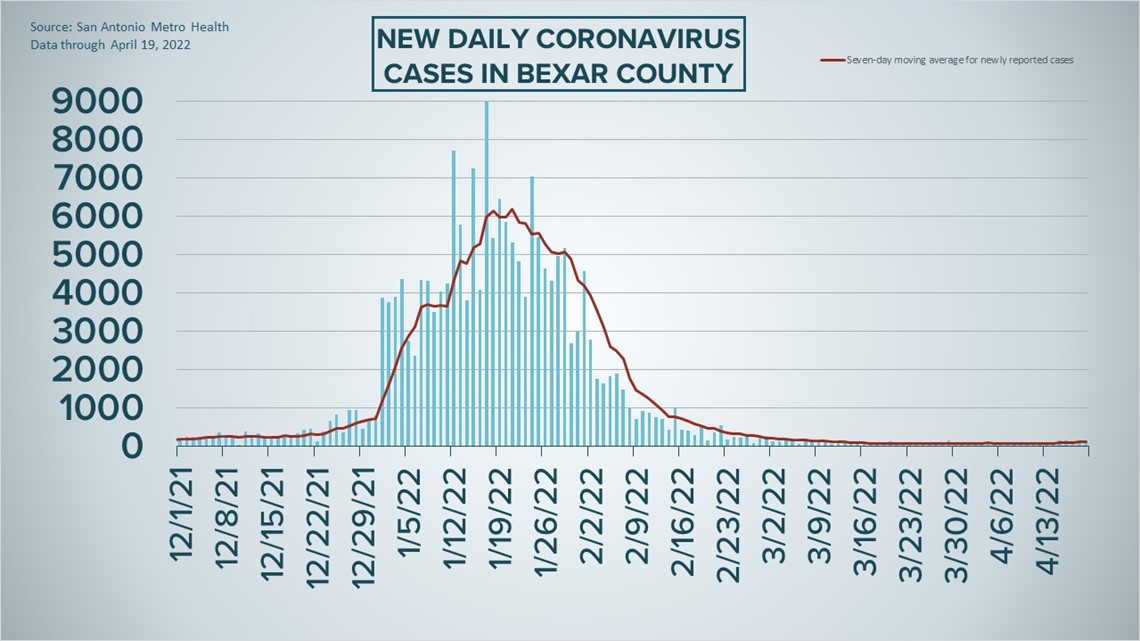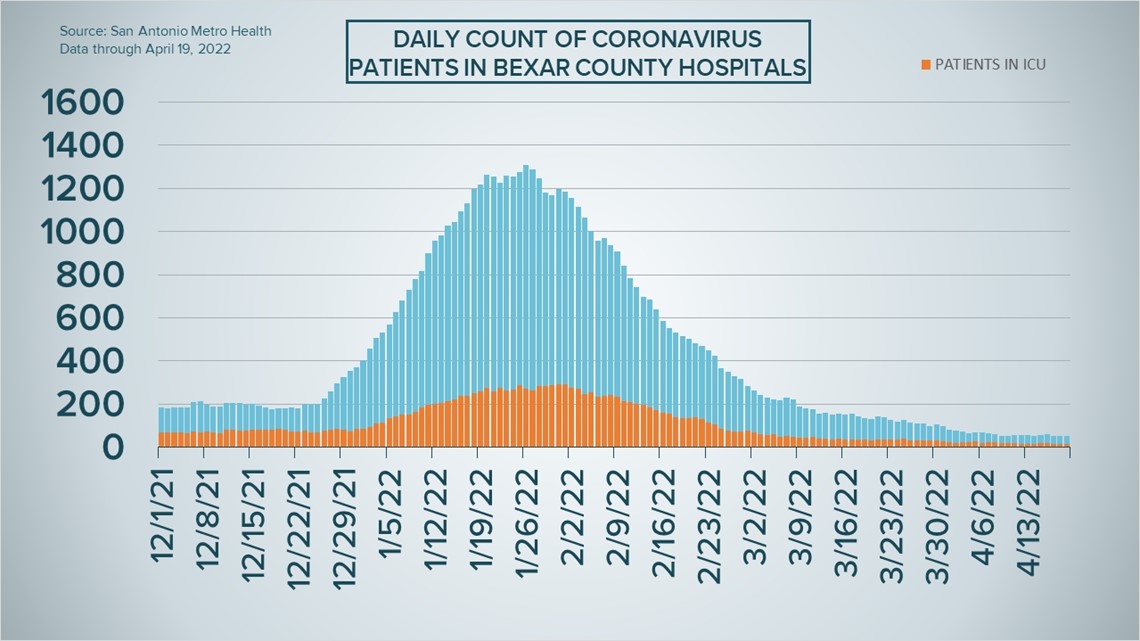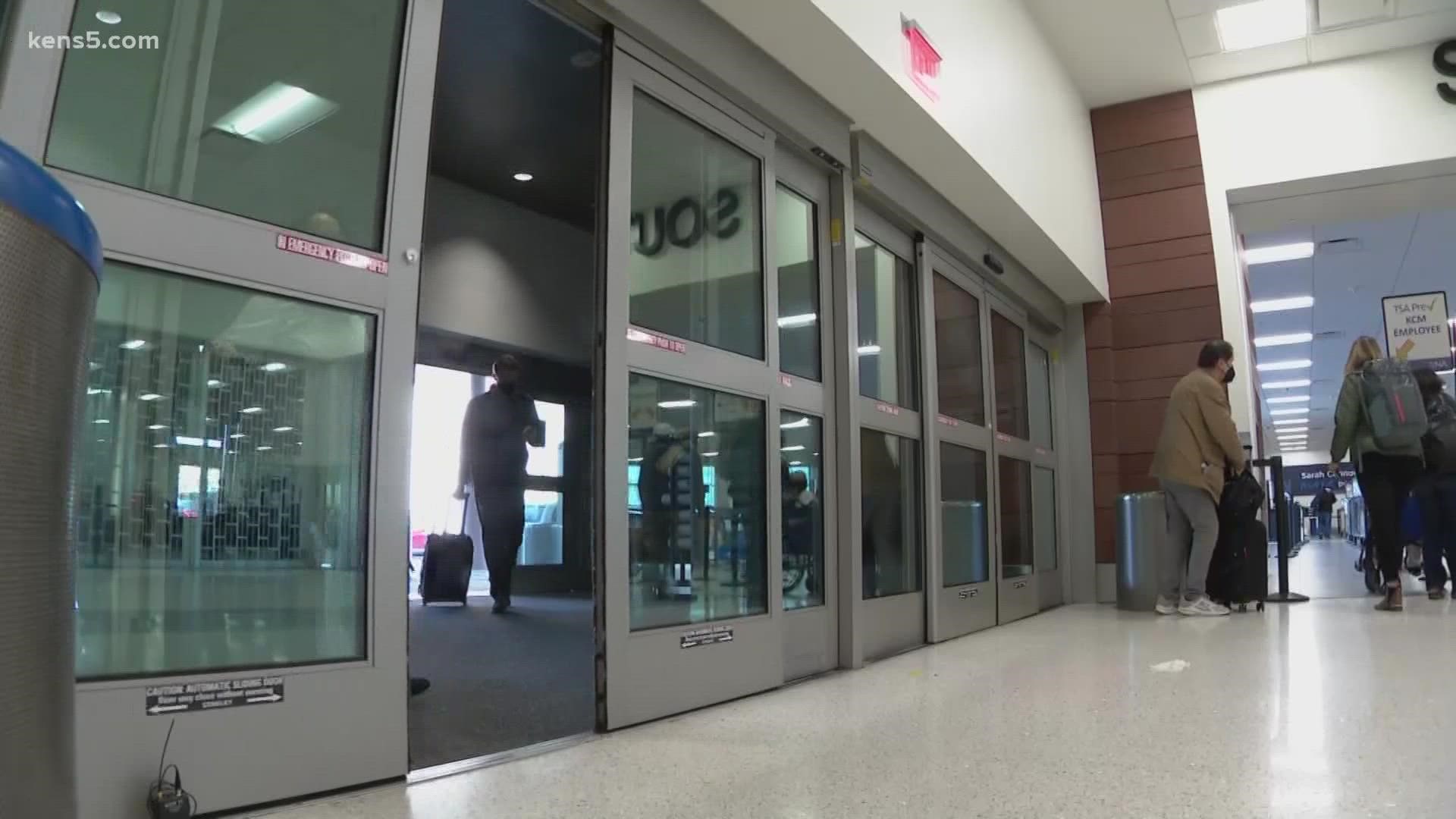SAN ANTONIO — The COVID-19 risk level remains in the "low" threshold Tuesday amid a slight increase in infections for the San Antonio area.
Three times in the last five days Metro Health has tallied a daily new-case count in the triple-digits, after recording no totals of at least 100 new coronavirus cases since March 29. Another 94 new diagnoses were recorded Tuesday, bringing the seven-day case average up to 105; on Monday the figure reached 100 for the first time in over a month.
The small uptick could be attributed to the massive in-person crowds that converged at San Antonio's recently concluded Fiesta celebration, but recent new-case totals are still miniscule compared to the average of 4,771 daily infections reported in January. April has brought an average of 81 so far, after 90 in March and 935 in February.
Hospitalizations haven't seen a parallel rise. On Tuesday there were 51 patients battling COVID-19 symptoms in Bexar County hospitals; Monday is the only other time in 2022 that that number has been lower. Local hospitalizations have fallen by 87% since the start of the year.
Of those 51 patients, 16 are in intensive care and eight are using ventilators to help them breathe.
More than 536,000 county residents have been diagnosed with COVID-19 while 5,319 have died from virus complications.
How Bexar County is trending




Vaccine Progress in Bexar County
The following numbers are provided by San Antonio Metro Health. A full breakdown can be found here.
- 1.44 million eligible Bexar County residents are fully vaccinated as of Monday, April 11.
- More than 501,000 eligible Bexar County residents have received their COVID-19 booster shot, as of Monday, April 11.
The CDC states that "when a high percentage of the community is immune to a disease (through vaccination and/or prior illness)," that community will have reached herd immunity, "making the spread of this disease from person to person unlikely."
The City of San Antonio breaks down the vaccination rates by zip code on Metro Health's Vaccination Statistics page.
Coronavirus in Texas
The total number of coronavirus cases in the state since the pandemic began grew by 3,119 on Tuesday, according to the Texas Department of State Health Services. That total includes 1,949 new confirmed cases and 1,170 new probable cases. More details can be found on this page.
Tuesday's figures bring the total number of Texans diagnosed with COVID-19 to more than 6.712 million.
An additional 28 Texans have died from virus complications, meanwhile, raising the statewide death toll to 86,396.
Coronavirus symptoms
The symptoms of coronavirus can be similar to the flu or a bad cold. Symptoms include fever or chills, cough, shortness of breath or difficulty breathing, fatigue, muscle or body aches, headache, new loss of taste or smell sore throat, congestion or runny nose, nausea or vomiting, and diarrhea, according to the Centers for Disease Control.
Most healthy people will have mild symptoms. A study of more than 72,000 patients by the Centers for Disease Control in China showed 80 percent of the cases there were mild.
But infections can cause pneumonia, severe acute respiratory syndrome, kidney failure, and even death, according to the World Health Organization. Older people with underlying health conditions are most at risk.
Experts determined there was consistent evidence these conditions increase a person's risk, regardless of age:
- Chronic kidney disease
- COPD (chronic obstructive pulmonary disease)
- Obesity (BMI of 30 or higher)
- Immunocompromised state (weakened immune system) from solid organ transplant
- Serious heart conditions, such as heart failure, coronary artery disease, or cardiomyopathies
- Sickle cell disease
- Type 2 diabetes
- The CDC believes symptoms may appear anywhere from two to 14 days after being exposed.
Human coronaviruses are usually spread...
- Between people who are in close contact with one another (within about 6 feet).
- Through respiratory droplets produced when an infected person coughs, sneezes or talks. These droplets can land in the mouths or noses of people who are nearby or possibly be inhaled into the lungs.
- Some recent studies have suggested that COVID-19 may be spread by people who are not showing symptoms.
Help stop the spread of coronavirus
- Stay home when you are sick.
- Eat and sleep separately from your family members
- Use different utensils and dishes
- Cover your cough or sneeze with your arm, not your hand.
- If you use a tissue, throw it in the trash.
Find a Testing Location
City officials recommend getting a COVID-19 test if you experience fever or chills, cough, shortness of breath or difficulty breathing, fatigue, muscle or body aches, headache, new loss of taste or smell, sore throat, congestion or runny nose, nausea or vomiting, or diarrhea.
Here's a Testing Sites Locator to help you find the testing location closest to you in San Antonio.
Latest Coronavirus Headlines
- Moderna announces step toward updating COVID shots for fall
- How many unruly airline passenger incidents were related to face masks?
- VIA will no longer require masks on city buses after federal mandate lifted
- Lyft, Uber make big changes to COVID-19 mask policies
- San Antonio International Airport officials, travelers, and airlines react to mask mandate being voided
- Bexar County Jail reports zero COVID cases for the first time since pandemic began
- 1st breath test for COVID-19 gets FDA OK
- 'Keep our guard up': COVID cases rising in US after 2-month decline

